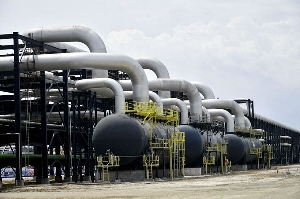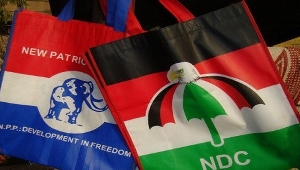Opinions of Saturday, 15 June 2013
Columnist: Quaah, Amos Ofori
A Letter to Mr. Kofi Portuphy
Re: Accra: Killer gas found at Dunkonaa, A Letter to Mr. Kofi Portuphy
By Dr A. Ofori Quaah, Flitwick, UK.
Dear Mr Portuphy,
I am sorry I have to contact you through this rather unorthodox way because I have lost contact with all my former colleagues of the Geological Disasters Sub-Committee, as my emails keep bouncing back to me, but the article with the above caption on Ghana Web has brought back memories of some fifteen years ago.
As the sages say, “Things that go round eventually come around” indeed. I still remember the hot debates on this subject in the NADMO conference room. I also remember the field trips we undertook in Donkunaa and the general area around MacCrthy Hill, the Weija Dam and Nyanyanu, among other places. As I remember, at the time there were just unusually high radon gas readings, but no visible smoke from the ground.
I can recall the general caution at the time that if residential houses were to be built in the area, they had to be built on stilts or raised platforms with lots of ventilation. Naturally GREDA pooh-poohed the idea. The result is that most of the houses in the area are sitting right on top of the source(s) of the emissions, with nowhere for the gases to escape to, especially at night when all windows and doors are tightly shut, for fear of mosquitoes.
If as reported, the current rather high radon gas readings are now accompanied by visible smoke, it may be geologically significant. This may mean renewed micro-movements on the many faults in the area, and particularly the junction between the main Coastal Boundary Fault from the Axim-Cape Three Points area and the Akwapim Fault zone (at Nyanyanu.) In this case the Geological Survey Department seismic network should experience some incremental recordings, if the microearhquake size should exceed Magnitude 1.5. Such micro-movements could also lead to micro cracking in buildings and other civil structures in the general area.
A very simple, low cost experiment can be mounted to test this. The records show that a British physicist/geologist that was attached to the Geological Survey of the Gold Coast monitored cracks in the Ministry of the Interior building (which apparently housed all the ministries at the time), from 1933, but his monitoring ceased abruptly in 1938, possibly because of transfer back to Britain. His experiment noted increased lengthening and volume of cracks in the building (not too long before the earthquake of June 1939.)
I would suggest monitoring of visible cracks in public and if possible, private houses in the area. Here I will suggest the offices and laboratories of the Ghana Water Company at Weija, the Ministry of Interior building and Peduase Lodge. As I remember from our field observations in March 2000, in that building, there were several “generations” of recurring cracks particularly, on the floors and walls of two of the main conference rooms.
Also, Mrs Amponsah’s thesis (which I partly supervised) showed two very interesting faults that intersect at Adabraka, very close to the Calvary Methodist Church Manse. Perhaps a child of the Manse could be interested in the monitoring as a school science project? It will only involve a strip of paper taped along a visible crack in a wall, the length of which will be marked on the paper with pencil daily or weekly, as we used to do with the “School Weather Chart” back in the “bad old days.” I would be glad to know how the experiments go.
Please, let me emphasise that this is a purely harmless scientific exercise, just to find out if the reported ‘smoke’ coming from the ground has a deep-seated source or just a shallow phenomenon; nothing to worry about.
Stay blessed.












